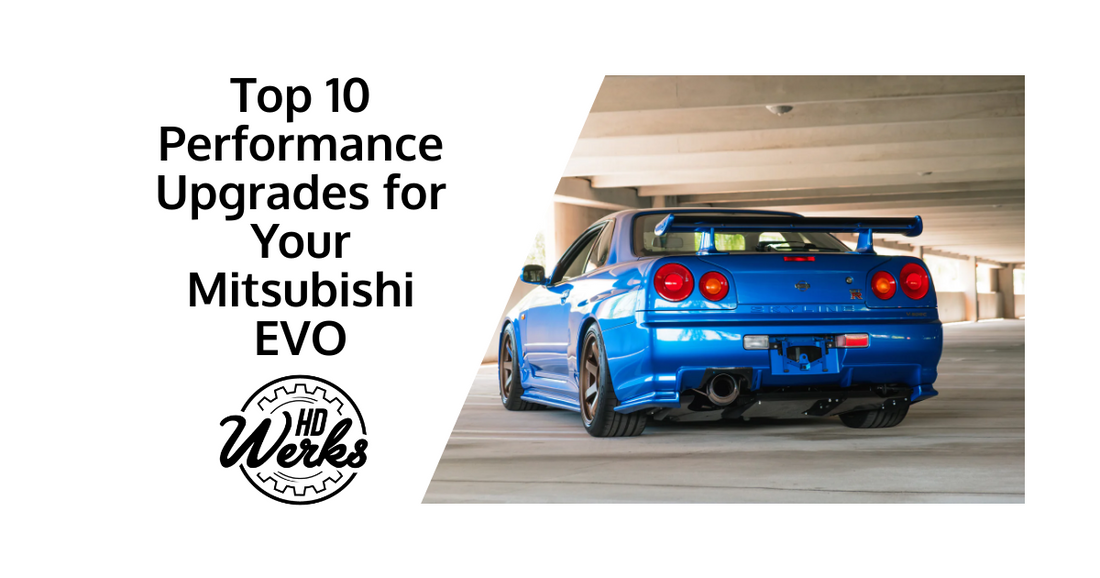Shifting your Evo’s potential from impressive to extraordinary demands a strategic selection of upgrades. Whether you’re carving corners on winding mountain roads or dominating the drag strip, each performance modification contributes to a cohesive, high-output package. This guide presents ten distinct upgrade categories, structured to cover every aspect of power, handling, and reliability—ensuring your machine achieves peak performance without overlap or redundancy.
Turbocharger Upgrades
A modern turbocharger can transform the EVO’s response and power curve. Rather than settling for stock configuration, investing in an optimized unit delivers substantial gains.
Next-Gen Turbos
- Ball-bearing technology for quicker spooling
- Larger compressor wheels enhancing airflow
- Integrated wastegate designs for consistent boost control
Key Considerations
- Material quality—maximize durability under high thermal stress
- Match turbo size to intended use (street vs. track)
- Verify compatibility with existing engine architecture
Engine Internals
Upgrading pistons, rods, and crankshafts is vital when chasing double-digit horsepower gains. Reinforced components resist increased cylinder pressures and high RPM stress.
- Forged pistons featuring superior strength-to-weight ratios
- H-beam or I-beam connecting rods for enhanced fatigue resistance
- Lightweight crankshafts offering faster throttle response
ECU Tuning & Electronics
Optimizing your engine control unit (ECU) unlocks the full potential of hardware enhancements. A precise calibration adapts fuel delivery, ignition timing, and boost management to real-world conditions.
- Custom flash maps tailored for fuel quality and altitude
- Boost controllers—electronic or manual—for on-the-fly adjustments
- Data-logging tools enabling iterative refinement
Deploying advanced tuning protocols often mirrors the diligence seen when exploring options for aircraft loan, underscoring the importance of expert guidance.
Intake & Exhaust Systems
Maximizing airflow into and out of the engine not only enhances horsepower but also refines throttle response and sound characteristics.
- High-flow air filters and cold-air intakes reducing intake air temperatures
- Mandrel-bent charge pipes improving boost stability
- Cat-back or turbo-back exhaust systems—select based on emissions and track regulations
Drivetrain & Differential
Efficient power delivery through the transmission and differential eliminates parasitic losses and ensures maximum traction under hard acceleration.
- Heavy-duty clutches and lightweight flywheels for crisp engagement
- Upgraded transmissions with reinforced gearsets
- LSD (limited-slip differential) options—clutch type, torque-biasing, or helical—for improved corner exits
Suspension & Handling
Upgrading suspension components transforms the EVO from a heavy sedan into a nimble corner-carving machine. Balance compliance with control.
- Coilover kits featuring adjustable dampers and ride height
- Sway bars and strut braces for reduced body roll
- Bushing replacements—polyurethane or spherical—for sharper steering feedback
Brake System Upgrades
Enhanced braking capacity is non-negotiable for high-performance driving. Consistent stopping power and pedal feel reduce lap times and increase driver confidence.
- Big brake kits with multi-piston calipers and larger rotors
- Performance brake pads formulated for high thermal stability
- Stainless steel braided brake lines resisting expansion under pressure
Aerodynamic Kits
Downforce and drag optimization elevate vehicle stability at speed. Thoughtfully designed aero components provide incremental grip without compromising top-end performance.
- Front splitters and canards guiding air under the chassis
- Adjustable rear wings for tuning rear axle load
- Underbody diffusers smoothing airflow and reducing turbulence
Cooling System Enhancements
Maintaining ideal operating temperatures prevents power roll-off and component fatigue. Upgrading key cooling elements ensures reliability during extended high-load sessions.
- High-capacity aluminum radiators with enhanced core thickness
- Oil coolers and sandwich plates regulating engine-lubricant temperatures
- Electric fans and high-flow water pumps for improved coolant circulation
Building a comprehensive cooling package can be as complex as evaluating options for aircraft loan, emphasizing careful planning and component selection.
Lightweight Components
Reducing unsprung and overall vehicle weight directly improves acceleration, braking, and cornering. Strategic lightweight upgrades offer compounding performance benefits.
- Carbon-fiber hoods, roof panels, and trunk lids
- Lightweight alloys for wheels and suspension arms
- Titanium hardware and fasteners trimming grams across the chassis
Frequently Asked Questions
-
How do I choose the right turbo size?
Consider your driving application—street-focused builds benefit from moderate spool times, while track cars can leverage larger turbos. Consult dyno data and professional tuners. -
When should I upgrade internal engine components?
If tuning beyond 400 horsepower or running high boost levels consistently, forged pistons and rods are essential to prevent component failure. -
Can I tune the ECU myself?
Basic adjustments may be possible with handheld devices, but full custom maps require specialized software and expertise to optimize performance safely. -
Are big brake kits worth the investment?
Yes. Improved heat dissipation and stopping power are critical for spirited driving and track use, outweighing the cost in safety and performance gains. -
Will lightweight upgrades affect ride comfort?
Minimally—strategic component replacement reduces mass without altering suspension geometry, preserving ride quality while enhancing dynamics.

